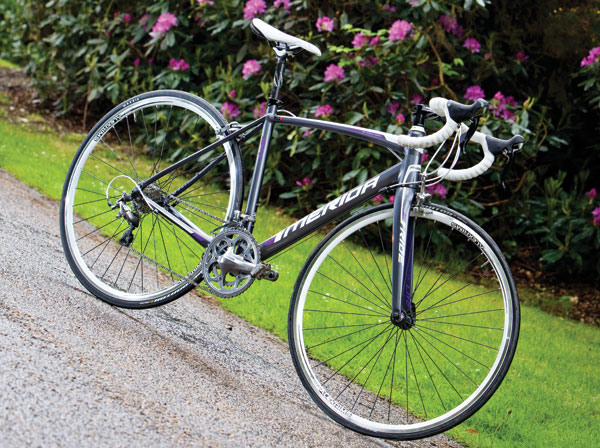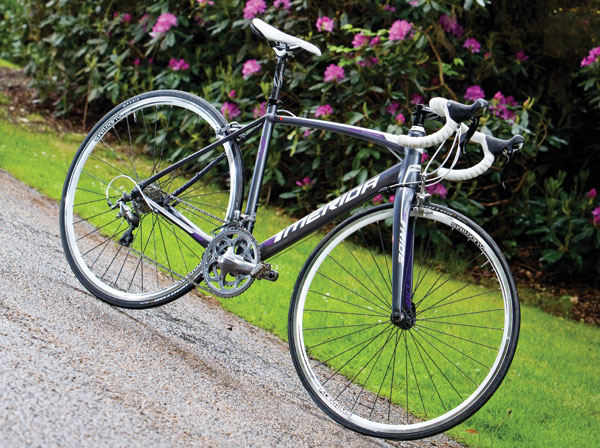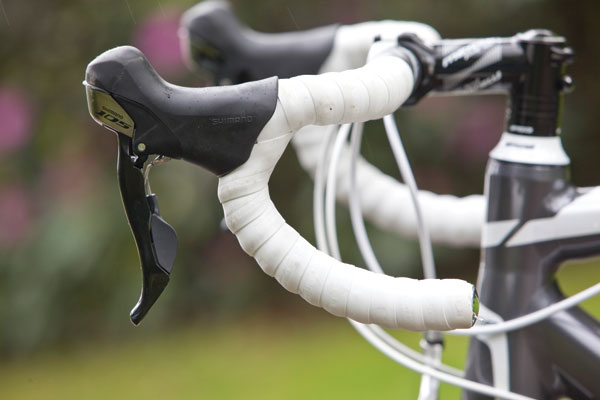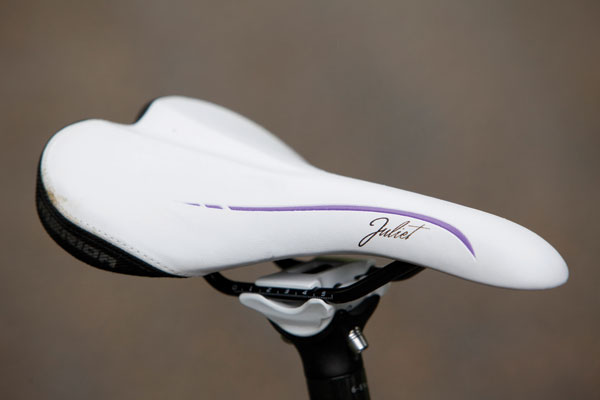Merida Ride Lite Juliet 94: First ride review

Merida Ride Lite Juliet 94
You can trust Cycling Weekly.


Words Derri Dunn | Photos Chris Catchpole
But soft! What bike through yonder traffic snakes? It is heading east, and the Juliet is the pun... which is becoming more contrived with every word, so now we’ve got the painfully tenuous Shakespearean connection out the way, on with the bike test.
There’s certainly nothing 16th century about Merida’s thoroughly modern approach to women’s bike manufacturing, anyway — unless you want to count the unmistakably women-specific model name and the use of purple; both are allegedly lady-friendly marketing ploys which I suspect may date back to at least Renaissance times.
That aside, a cursory glance at the geometry figures for the Juliet and the corresponding unisex model (disappointingly named simply Ride Lite and not Romeo or Mercutio) reveals that corresponding sizes are, in fact, one and the same — and the general consensus among female CA staffers is that this is a good thing.
We’re not fans of women-specific bikes that have had the geometry contorted into some shape spat out by a computer program working on a typical (or rather stereotypical) female form — both female and male cyclists come in too many different shapes and sizes for this to work well. We’re pleased Merida, and other brands, are finally recognising this and offering women’s bikes which are simply the unisex equivalent, but with some smaller sizes, shorter stems and ladies’ bar and saddle.

Except, the Juliet 94 isn’t quite a direct equivalent to anything unisex in Merida’s road range. The cheaper Ride Lite Juliet 91 sits alongside a corresponding Ride Lite 91 model, but interestingly the Juliet 94 we tested is the only Merida Ride Lite furnished with a Shimano 105 drivetrain — the closest unisex alternatives are the costlier Ride Carbon 94 which also wears 105, or the cheaper Tiagra-equipped Ride Lite 93. It’s very much indicative of the demand for high quality women’s sportive bikes, with the very best components for under £1,000.
It has to be said, when it comes to the £1,000 price point, Merida really has squeezed the budget until the pips squeak. The level of quality is simply mind-blowing. Most notably, the fork is full carbon, where often bikes at this price proffer an alloy steerer. It also sports a tapered steerer and matching head tube, offering the very latest technology in front-end precision and stiffness.
The latest race content, interviews, features, reviews and expert buying guides, direct to your inbox!
Internal cable routing looks stunning and is another quality addition we wouldn’t normally expect below £1,000. Hubs match the Shimano 105 groupset, rims are from Alex and the headset from FSA — in fact, there’s very little own-branding going on with the components at all and notably the Merida-labelled seatpost is made of carbon.
The luxury appearance is let down a touch by the cheap-looking Merida women’s lilac and white saddle. There’s also evidence of some more major money saving if you glance downwards — the bottom bracket shell doesn’t have the smooth welds of the rest of the bike and the BB is an external-bearing type — it would have been nice to see an ultra-modern and stiff BB30 or similar to match the posh steerer. We do recognise that costs must be trimmed somewhere to make way for some of the costly technology exhibited elsewhere on the bike, though.

Could the Juliet be more than the sum of all its quality parts out on the road? Well, despite its smooth welds, fancy steerer and internal cables, the Juliet is still every inch a sportive bike in terms of geometry and ride. The front end is pretty tall thanks to a tall head tube, giving a fairly stately, comfortable and upright ride. Although the tapered steerer certainly adds precision to the handling, stability and comfort are very much favoured over balls-out high speed sprint efforts.
The Juliet’s no slouch, but it’s happier cruising along at relaxed speeds than going wild and the stable handling reflects this too. The tyres feel like they let the ride down a bit — the 25c Maxxis Detonators, really more of a commuter tyre, feel fairly unyielding. Upgrading to a fast-rolling, higher quality set of 23c rubber would add a touch more finesse to the ride.
In the Juliet, Merida has come up with a really interesting alternative to the standard women’s £1,000 sportive bike option. Shrewd cost-cutting in places, like the bottom bracket, and speccing budget examples of easily upgradeable components such as tyres, saddle and stem has meant it is genuinely able to offer a real taste of luxury with Shimano 105 internal cables and tapered full-carbon steerer. It’s a refreshing break from tradition and if that’s not for you, well, a plague o’ both your houses.
Specification
Merida Ride Lite Juliet 94 £999.99
Frameset Hydroformed 6066 aluminium, full carbon fork with tapered steerer
Gears Shimano 105
Chainset Shimano R565 50/34t
Brakes Shimano R561
Wheels Alex Race 24 rims, Shimano 105 hubs
Tyres Maxxis Detonator 700x25c
Bar/stem Merida Road Pro Juliet/Merida Pro E OS-7
Saddle Juliet Sport
Seatpost Merida Carbon
Size range 44, 47, 50, 52cm
Weight 8.86kg
Alternative
Merida Ride Carbon 94 £1,500
If the Juliet’s full carbon fork and seatpost just aren’t enough of the black stuff for you, consider the Ride Carbon 94. For an extra £500, it offers the same sportive-friendly geometry and identical component spec to the Ride Lite Juliet 24, but with a full carbon monocoque frame. It isn’t female-specific, but frame sizes go down to 50cm so all but the shortest women will be able to get one to fit. On a bike of this price, your bike shop should be able to swap you in a more women-friendly saddle, bar and stem for minimal or no extra cost, too.

Nigel Wynn worked as associate editor on CyclingWeekly.com, he worked almost single-handedly on the Cycling Weekly website in its early days. His passion for cycling, his writing and his creativity, as well as his hard work and dedication, were the original driving force behind the website’s success. Without him, CyclingWeekly.com would certainly not exist on the size and scale that it enjoys today. Nigel sadly passed away, following a brave battle with a cancer-related illness, in 2018. He was a highly valued colleague, and more importantly, an exceptional person to work with - his presence is sorely missed.